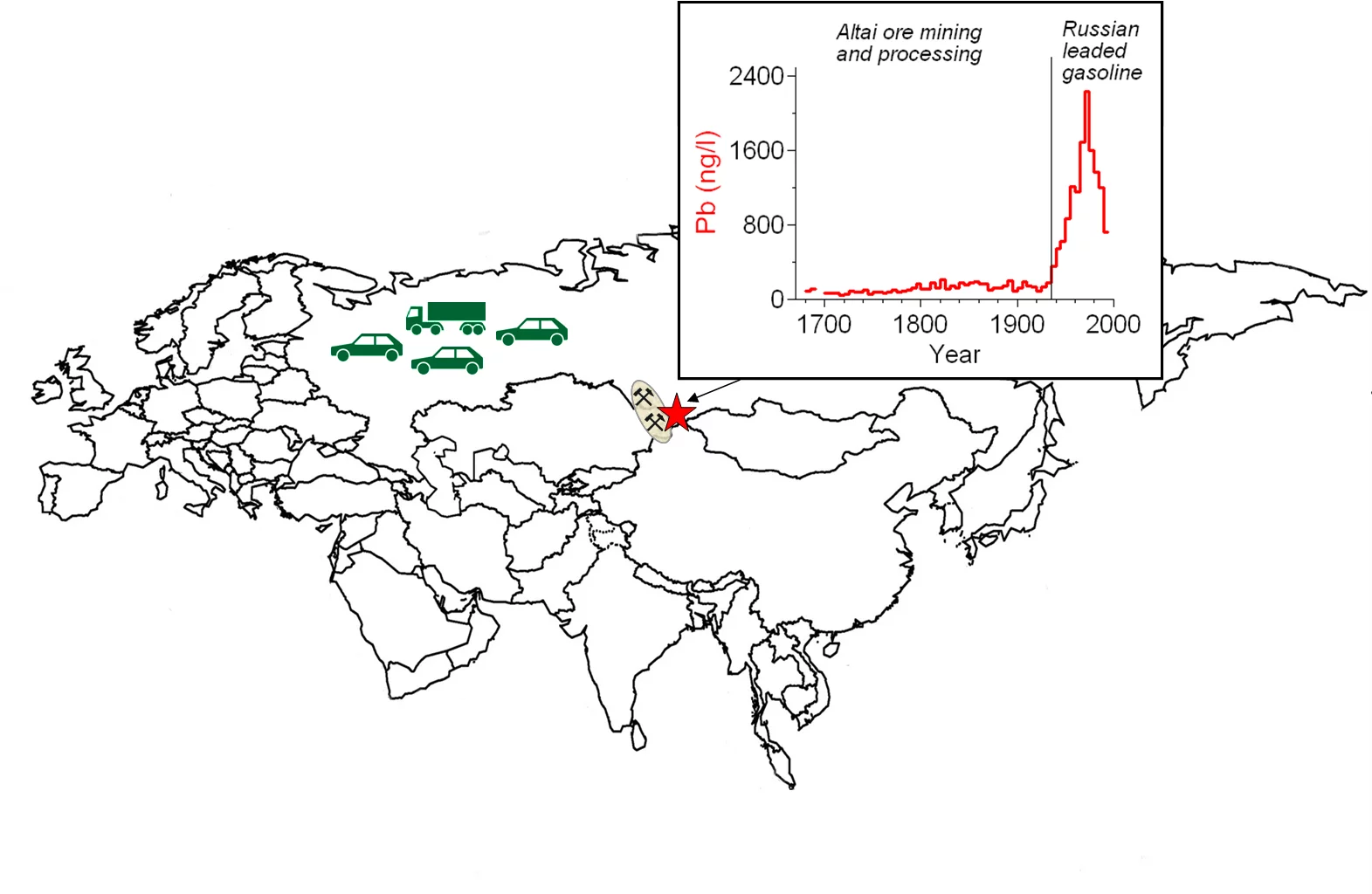Research Division Biology and Chemistry (BIO), Analytical Chemistry Group, Head Margit Schwikowski.
Human activities have significantly altered atmospheric Pb concentrations and thus, its geochemical cycle, for thousands of years. Whereas historical Pb emissions from Western Europe, North America, and Asia are well documented, there is no equivalent data for Eastern Europe. Here, we present ice-core Pb concentrations for the period 1680–1995 from Belukha glacier in the Siberian Altai, assumed to be representative of emissions in Eastern Europe and the Altai. Pb concentrations and Pb-207/Pb-206 ratios were strongly enhanced during the period 1935–1995 due to the use of Pb additives in Russian gasoline mined in the Rudny Altai. Comparable to Western Europe and North America, Eastern European Pb emissions peaked in the 1970s. However, the subsequent downward trend in Eastern Europe was mainly caused by the economic crisis in the U.S.S.R. and not by a phase-out of leaded gasoline. Pb concentrations in the period 1680–1935, preceding the era of intensified industrialization in Russia, reflect the history of local emissions from Rudny Altai mining and related metallurgical processing primarily for the production of Russian coins. During this time, Altai ore Pb contributed about 40% of the regional atmospheric Pb.
Publication: http://dx.doi.org/10.1021/es2039954
Further publications: LUC Homepage

